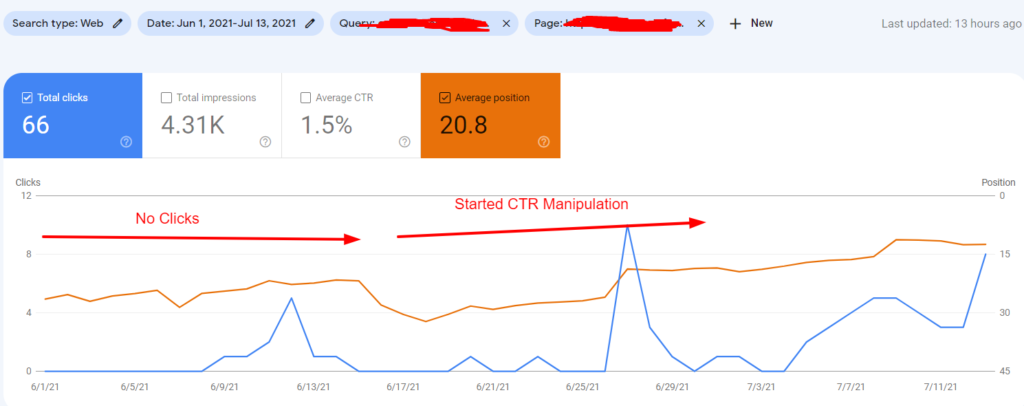CTR Control: A Video Game Changer for Digital Projects
The increase of CTR manipulation has without a doubt changed electronic advertising and marketing methods, giving marketers with tools to improve involvement and drive website traffic successfully. What implications might this stabilizing act hold for the future of digital projects?
Recognizing CTR Adjustment
Although click-through rate (CTR) adjustment might look like a straightforward strategy in electronic marketing, it encompasses a variety of strategies targeted at synthetically inflating involvement metrics. This adjustment can take different kinds, consisting of making use of click ranches, robots, or deceitful advertisement placements that deceive consumers right into clicking. These methods can endanger the stability of performance data, making it testing for marketing professionals to assess the genuine effectiveness of their campaigns.
In addition, CTR control elevates moral concerns, as it threatens the transparency of electronic marketing. The reliance on filled with air metrics can cause misdirected advertising decisions, skewing source appropriation and project methods. Services might invest heavily in channels and techniques that show up successful yet do not produce genuine interaction or conversions.

Benefits of Click-Through Rate Optimization
Enhancing click-through price (CTR) is vital for enhancing the efficiency of digital marketing campaigns. A greater CTR suggests that a bigger percentage of users are involving with the material, which can bring about enhanced internet site web traffic and better conversion rates. By enhancing CTR, brands can effectively designate their advertising sources to campaigns that yield the greatest returns.
Among the primary benefits of CTR optimization is the possibility for improved ad positioning and lower expenses - CTR Manipulation. Systems like Google Advertisements award higher CTRs with much better advertisement positioning and lowered cost-per-click (CPC), allowing marketing experts to stretch their budgets even more. Furthermore, a well-optimized CTR can boost brand presence, as higher involvement prices frequently associate with increased organic reach

Techniques for Efficient CTR Adjustment
To properly control click-through rates (CTR), marketing experts can use a variety of strategic strategies that boost customer engagement and drive web traffic. One essential strategy is maximizing advertisement copy to create engaging and action-oriented language. CTR Manipulation. Making use of strong call-to-action (CTA) phrases urges individuals to take immediate action, increasing the probability of clicks
Another efficient strategy is A/B screening, which enables marketing professionals to compare various ad variations. By systematically evaluating performance metrics, they can recognize which elements reverberate finest with the target audience, therefore improving their techniques for maximum influence. In addition, leveraging aesthetically attractive graphics and concise messaging can record interest swiftly, making it much more probable that users will engage.

Finally, maximizing touchdown pages to make sure a smooth user experience can decrease bounce prices and urge more communication, ultimately cultivating greater CTR. By integrating these strategies, marketing experts can properly control CTR to accomplish their project objectives.
Gauging Success in Digital Projects
Determining success in digital projects calls for a clear understanding of crucial performance signs (KPIs) that straighten with project goals. KPIs function as measurable metrics that aid assess the effectiveness of different approaches utilized throughout the project. Typical KPIs include click-through rates (CTR), conversion rates, expense per purchase (CPA), and return on investment (ROI)
To efficiently determine success, it is crucial to develop details, quantifiable goals initially of the project. If the primary purpose is to enhance brand name awareness, metrics such as impressions and interaction rates might be prioritized. On the other hand, projects concentrated on straight sales would certainly gain from a much more detailed analysis of conversion rates and profits produced.
Normal evaluation of these KPIs allows marketing experts to make data-driven decisions, optimizing their strategies in real-time. Making use of analytical tools can help in monitoring efficiency and identifying trends, enabling quick changes to boost campaign results. Ultimately, a comprehensive approach to determining success not just highlights areas for improvement however also reinforces the general performance of electronic marketing initiatives, driving continual growth and interaction in the long-term.
Future Fads in Digital Advertising
Expecting the future of electronic marketing exposes a landscape formed by quick technological advancements and changing consumer habits. As fabricated intelligence and equipment discovering remain to progress, marketing professionals will significantly utilize these technologies to individualize campaigns look at this web-site at an extraordinary range. Predictive analytics will certainly make it possible for brand names to anticipate customer demands, enhancing advertisement positionings and content distribution in genuine time.
Additionally, the increase of voice search and wise gadgets is transforming exactly how consumers interact with electronic material. Online marketers will certainly require to adjust their approaches to make sure presence across numerous systems, consisting of voice-activated assistants. This shift necessitates an emphasis on conversational advertising, stressing involvement with dialogue instead of traditional advertising techniques.
Additionally, privacy issues are triggering changes in information collection practices. Openness and moral information usage will come to be paramount, driving brands to foster trust and loyalty among consumers. The continuous development find this of social networks systems will certainly likewise influence marketing approaches, with an increased emphasis on credibility and user-generated web content.
Final Thought
In summary, CTR control represents a considerable development in digital advertising methods, supplying prompt benefits with enhanced interaction metrics. However, the moral considerations bordering such techniques require a careful technique to make sure lasting brand name integrity and real audience connection. By striking a balance in between optimization methods and authentic interaction, online marketers can grow sustainable partnerships with customers. The continuous evolution of electronic advertising will depend upon this delicate interplay, forming the future landscape of brand-consumer interactions.